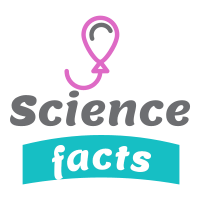Dwarf Planet
A dwarf planet is a planetary-mass object that is neither a true planet nor a natural satellite. That is, it is in direct orbit of a star, and is massive enough for its gravity to compress it into a hydrostatically equilibrious shape (usually a spheroid), but has not cleared the neighborhood of other material around its orbit.
The term dwarf planet was adopted in 2006 as part of a three-way categorization of bodies orbiting the Sun, brought about by an increase in discoveries of objects farther away from the Sun than Neptune that rivaled Pluto in size, and finally precipitated by the discovery of an even more massive object, Eris. The exclusion of dwarf planets from the roster of planets by the IAU has been both praised and criticized.
As of July 2008 the International Astronomical Union (IAU) recognizes five dwarf planets: Ceres in the asteroid belt, and Pluto, Haumea, Makemake, and Eris in the outer Solar System.
What is a dwarf planet?
Astronomers are constantly discovering new objects that they need to describe. In 2006, they decided on a new class - dwarf planets. These are small, almost round bodies that orbit the Sun in a belt of other objects. The solar system is also full of other small bodies, including moons that orbit planets, asteroids, Kuiper Belt Objects that form a flattened belt beyond Neptune, and comets.
Streakers
Meteors occur in the sky every night. They are fleeting streaks of lightcause by comet dust particles travelling through Earth's atmosphere. They are best spotted during one of the 20 or so annual meteor showers.
From out of the sky
- Rocks from the space sometimes make it to Earth andcare known as meteorites.
- Most come from asteroids but some originate from the Moon and Mars.
- About 3,000 meteorites weighing more than 1 kg (2 lb) land on Earth every year - most fall into the oceans.
- More than 22,500 meteorites have been collected and catalogued
- The largest meteorite ever found landed in Hoba West, Namibia in 1920. It weighed 66 tonnes.
- There are three main types of meteorites.
- Stony
- Iron
- Stony-iron
Mysterious moons
This is the smallest of uranus's five major moons. Its rugged surface covered with huge canyons.
lo
This moon of jupiter is covered in active volacnoes that are constantly renewing its surface.
Titan
The largest of Satur's moons, it is the only planetary moon to have a thick atmoshere
Phobos
Mars has two tiny moons. Phobos, the largest, which is 27 km (17 miles) across, and Deimos.
Top 10 biggest moons
Name Diameter parent planet
01. Ganymade 5,260 km Jupiter
02. Titan 5,150 km Saturn
02. Titan 5,150 km Saturn
03. Callisto 4,820 km Jupiter
04. lo 3,640 km Jupiter
05. Moon 3,480 km Earth
06. Europa 3,120 km Jupiter
07. Triton 2,710 km Neptune
08. Titania 1,580 km Uranus
09. Rhea 1,530 km Saturn
10. Oberon 1,520 km Uranus
Impact craters
Most extraterrestial bodies heading for Earth are broken up as they pass through the atmosphere, but sometimes big objects or parts of them, survive and crash onto the surface as meteorites, gouging out vast craters. include the Manicouagan Crater, seen here from space.
name location diameter age (years)
Vredefort South Africa 300 km more than 2 billion
Sudbury Canada 250 km 1.85 billion
Chicxulub Mexico 170 km 65 million
Popigai Russia 100 km 35.7 million
Manicouagan Canada 100 km 214 million
Fast Facts
Asteroids
01. Asteroids are remains of a rocky planet that failed to form between Mars and Jupiter 4.5 billion years ago.
02. The remains did not stick together but smashed into each other.
03. These rocky and metallic objects were scattered throughout the solar system crashing into planets.
04. Eventually, a belt of rocky bits, known as the Main Belt, settled between Mars and Jupiter, plus a small number of asteroids on other orbits around the Sun.
05. Some asteroids known as near-Earth asteroids, travel closed to the earth and have the potential to hit it.
Tell me more: comet anatomy
01.Nucleus: The heart of the comet is an irregular-shaped ball of snow and dust covered in a thin crust of dust.
02. Coma: As the comet moves close to the Sun it forms a huge head of gas and dust.
03. Gas tail: The sun's heat turns the nucleus snow to gas, which flows out a blue tail.
04. Dust tail: Dust released from the nucleus trails away from the coma as a white tail.
Cool comets
- Comets are huge dirty snowballs left over from when the gaint planets formed.
- Their path take them in all directions as they orbit around the Sun.
- There are trillions of comets. They make a vast sphere, called the oort cloud, which surrounds the planetary part of the solar system.
- Some comets have left the Oort Cloud and now orbit in the inner solar system returning again and again to the Earth's sky.
Thankyou Guyzzz how'z our Blog.Tell us in a comment and if you have any question related to our blog so ask me guyzz and subscribe our blog for more info.
Have a nice day.
























.jpg)


